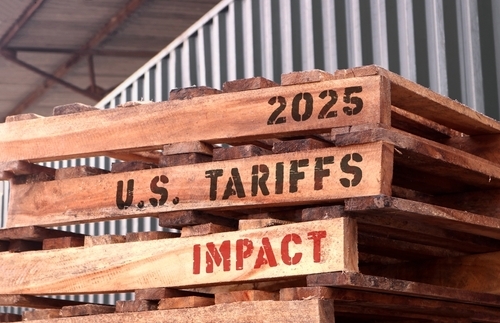There will be no “stripteases” at next month’s Women’s World Cup soccer matches. When the Games took place in the United States in 1999, the U.S. team’s victory over China shared the spotlight with Brandi Chastain’s sports bra when the defender whipped off her shirt in a frenzy after scoring the victorious goal.
This year, fans will not witness any excess skin on the field. FIFA, the international governing body for soccer, last month ordered players to keep their shirts on during matches and banned all post-goal shirt removals.
Most soccer fans don’t follow the game for ogling purposes, however. But will the general public turn out — or turn on — to support women’s soccer like they did back in 1999? The U.S. Women’s team first captured the Cup in 1991, but not on U.S. soil, which meant the victory was largely overlooked.
Not enough people recognize the power of women’s sports — particularly soccer — for marketing, says Rod Taylor, senior VP at CoActive Marketing, Great Neck, NY. “I can understand not getting the ’99 World Cup — if you are an outsider you don’t see how popular women’s soccer is,” Taylor says of the hoopla surrounding the sport after the U.S. triumph.
Taylor predicts another U.S. victory this year and criticizes the lack of marketing leading up to the Games. “From a promotional standpoint, this should be the motherlode and it’s nothing but a wasteland,” Taylor says. “Soccer has such a tremendous demographic of suburban, upper middle class people and marketers just don’t get it.”
Perhaps if the games garner as much — if not more — attention this year, the longevity of women’s sports will finally pay off. After all, it’s only been 31 years since Title IX outlawed discrimination in school sports, and a new generation of girls, encouraged to participate and given the resources, are thriving in athletics.
While women’s sports fight for a higher profile, the future looks brighter — if more companies are willing to take a marketing gamble, says Donna Lopiano, executive director of the Women’s Sports Foundation, an East Meadow, NY-based advocacy group for female athletes. “We’re still in a bad economic time and nobody is taking risks, and women’s sports is a developing property that needs risk-takers,” she says.
Playing catch-up
The “developing property’s” evolution is best marked by milestones, like the 1996 Summer Olympics in Atlanta.
Staged 18 years after Title IX fully kicked in, the Games nearly perfectly coincided with the amount of time required to cultivate a professional female athlete.
“The Atlanta Olympics was when women became the cover story,” says Karen Durkin, chief marketing officer and senior VP of the Ladies Professional Golf Association. “It was then that it became acceptable for women’s sports to be a part of the regular diet of corporations’ marketing programs. Prior to that, in most cases, women athletes would get onto the cover of magazines during the Nancy Kerrigan/Tonya Harding scandal, or Monica Seles’ stabbing.”
The Daytona Beach, FL-based LPGA isn’t crying for attention these days. The organization saw its popularity soar when its star player, Annika Sorenstam, took a swing at the men’s PGA Tour this spring.
Since then, Upper Deck has begun including LPGA tour players in trading cards for the first time and Nike has signed a multi-million dollar deal with player Grace Park. Thirteen-year-old golfing sensation Michelle Wie is also getting plenty of press. Women’s golf even warrants bobblehead promotions now. At the Chick Fil-A Charity Championship in April, bouncing replicas of the LPGA’s Juli Inskster were distributed.
“The consumer and sponsor appeal for women’s sports is certainly growing,” Durkin says. “It’s not solely the amount of dollars being spent, but the true marketing platforms.”
In some markets, an LPGA tour stop is the event to attend.
At the Wegman’s Rochester International in June, the LPGA worked with the local community to host in-market promotions for the first time. Three different radio stations tied in with contests dangling prizes including tickets to a charity event with players, as well as a walk inside the ropes.
But in markets such as Chicago, the fight for attention is more difficult. “All of the big companies in town can take a customer to a skybox just about any night of the week,” says Mark Hersch, president of Gateway Sports, and tournament director for the Kellogg-Keebler Classic, held in the Windy City in late May. This year, Gateway worked with Chicago’s famous Oberweis Dairy and sought out consumers to try to make a 50-foot putt for $25,000.
Also, local consumers were offered the chance to play with Laura Diaz, Kellogg’s sponsored athlete. The contest was communicated through in-store displays.
“Once you get involved with the LPGA, you see that it’s a sport with a lot of passion,” Hersch says. “There are no casual NASCAR fans. You are either a nut or you don’t care, and I think the LPGA is the same way.”
Soccer fans argue their sport has an even more rabid following. But the Atlanta-based Women’s United Soccer Association was formed just three years ago and in its case, marketing may help the league’s brand as much as it lends value to its sponsors. As a WUSA sponsor, Coca-Cola’s Powerade in June and July teamed up with 580 Eckerd’s pharmacies in North Carolina, South Carolina and Georgia for two in-store sweeps targeting families and offering trips to two soccer matches. The winner’s child could also be a ball kid in the game.
Through the end of this month, fans can enter for a similar offer that incorporates Acme stores in Philadelphia and all of Eckerd’s 2,700 locations nationwide. The grand-prize winner of the sweeps scores a trip to the World Cup in Los Angeles in October — and their child serves as a ball kid. Red Moon Marketing, Charlotte, NC, handles the WUSA marketing for Coke.
Since this year’s World Cup was abruptly moved to the U.S. from China due to the SARS epidemic, sponsors have had to scramble. Hyundai is the one WUSA and FIFA sponsor that quickly changed promotional tactics, swapping its sweeps prize from a trip to China to one to the final match in Los Angeles.
Hyundai Motor America also participates in WUSA sponsor Maytag’s Outstanding Soccer Mom Search promotion. Children can nominate their moms by submitting essays at WUSA matches or online. Four finalists score trips to the World Cup final and one winner receives a Hyundai Santa Fe SUV and a suite of Maytag appliances.
Still, Kathy Faith, Fountain Valley, CA-based Hyundai’s national manger of corporate promotions, says she’d like to see more activation cashing in on the rich soccer mom demo. “It’s an untapped market and WUSA games are a fabulous way to talk to your consumer in a non-threatening and non-sales atmosphere,” she says.
There is an increased interest in women’s sports within pockets of Corporate America, says Lynn Morgan, president and CEO of the WUSA. “There seems to be a social correctness to supporting women’s sports,” she says.
Aligning with women’s sports works best for family-targeted brands, says Mike Reisman, a principal at Wilton, CT-based Velocity Sports & Entertainment. However, while brands geared toward the traditional gatekeeper may jump into women’s sports, given that women are the primary purchase deciders, it can be limiting since it does not have the reach that men’s sports have. “The NFL can say they are reaching males 25 to 54 and that’s why they can get FedEx and Campbell Soup,” Reisman explains. In other words, women’s sports may attract the fan quality marketers desire but men’s sports still draw the quantity and diversity.
But brands are becoming more comfortable targeting niches rather than mass audiences. Increased use of digital cable in the future will bode well for women’s sports as programming becomes more niche and other channels such as the Golf and Tennis channels crop up, Lopiano says.
Consequently, there is a slow but steady growth of interest in women’s sports leagues, Reisman says. He cautions, however, that expectations should be measured against emerging sports leagues such as the Arena Football League or the National Lacrosse League. “It can’t be about creating a league that will rival the NBA or NFL in popularity,” he says.
“The men’s sports leagues have at least a 50-year jumpstart on the women. It’s unfair to dismiss them,” says Sue Rodin, president of women’s sports marketing shop Stars & Strategies in New York City.
“I think it just takes time,” says Dan Levy, an agent with Octagon Sports. “There’s no question that people are realizing not just that women’s sports are here to stay, but that female athletes are great role models for kids and they are affordable to work with.”
In terms of using female athletes for marketing campaigns, they are articulate and mark a refreshing change from working with male athletes, who often have large egos in tow, Rodin says.
Shifting business models
Several women’s sport leagues are restructuring in order to better leverage their marketing potential.
For example, since its inception, teams in the New York City-based Women’s National Basketball Association were owned and operated by the NBA. After six years without profits, the change was made this year for team operators to take on full ownership. “We looked at our growth model for the next seven to 10 years and it makes sense to have outside ownership and to reach into pockets that are not NBA cities,” says Mary Reiling Spencer, VP-marketing partnerships at the WNBA.
The new structure allows greater flexibility in the teams’ ability to recruit new sponsors. The WNBA scored a major coup this year when Procter & Gamble signed on as a three-year league sponsor — marking the first time the CPG inked a multi-year, multi-brand partnership with a sports property. The seven P&G brands on the court are Secret deodorant, Herbal Essences and Head & Shoulders shampoos, Swiffer cleaning products and Cascade, Cheer and Joy detergents. The deal will include team partnerships, end-of-aisle displays at retail and advertising focused on popular players.
“Since we are reaching women and teens, you have to be smart about how you market to them,” Reiling Spencer says. “Women don’t buy brands, they join them.”
Changes are also under way at the 53-year-old LPGA. Last year, the association began to transition from a member organization to a fan-based sports and entertainment company with a strategic five-year plan.
Already, ratings have increased 20%. “We are in a number of sponsor discussions that might not have happened without Annika [Sorenstam], and all have been accelerated by and followed the new strategic plan,” Durkin says.
Elsewhere, the St. Petersburg, FL-based Women’s Tennis Association (WTA) launched its first brand campaign that includes print, outdoor and TV ads. TBWA/Chiat/Day, San Francisco, handles.
Until recently, the WTA Tour had been closely associated with its title sponsors, says Dave Larson, WTA Tour VP-marketing and communications. “If you look at some of the other successful leagues, it’s not the Pepsi NBA, it’s the NBA with its own look and message and that’s what we want.”
The challenge now is convincing the 58 tournaments to use the new WTA branding message. “Right now, everybody does marketing and some spend a lot of money and do a good job, but there is no thread of consistency,” Larson says. “If we could market properly — which we are trying to do — it could be a springboard to a much needed promotional push for women’s sports in general.”
And maybe if the U.S. Women’s Soccer team does capture the World Cup this year, the headlines will be more about the accomplishment and less about the sports bras.
Born to Ride
Having a loved one teach you how to drive can be a white-knuckle experience. Having that same person teach you how to surf or snowboard can prove even more trying. That’s what Mark Sperling discovered a few years ago when he tried to introduce his girlfriend to snowboarding. “Out of the growing frustration, we realized having me teach her was not the best thing,” says Sperling, VP at Propaganda Headquarters, an action sports marketing agency in Laguna Beach, CA. After commiserating with friends who faced similar challenges with their athletic companions, Sperling invented a program called Girls Learn to Ride, an action sports clinic that teaches the basics in skateboarding, surfing, motorcross, wakeboarding and snowboarding to women. The classes are taught by certified instructors, including male and female professional athletes. Ocean Pacific Apparel Corp. (Op) is the title sponsor of the series. The goal is to encourage more women to try out extreme sports, says Mike Marcx, VP-marketing and advertising for Irvine, CA-based OP. “In the last 10 years we have been doing a girls’ junior business, but we have not been servicing it as well as we could.” American Honda Motor Co. signed on as a supporting sponsor and six of the 50 events this year will take place at Honda’s Rider Education Centers.
 Network
Network

